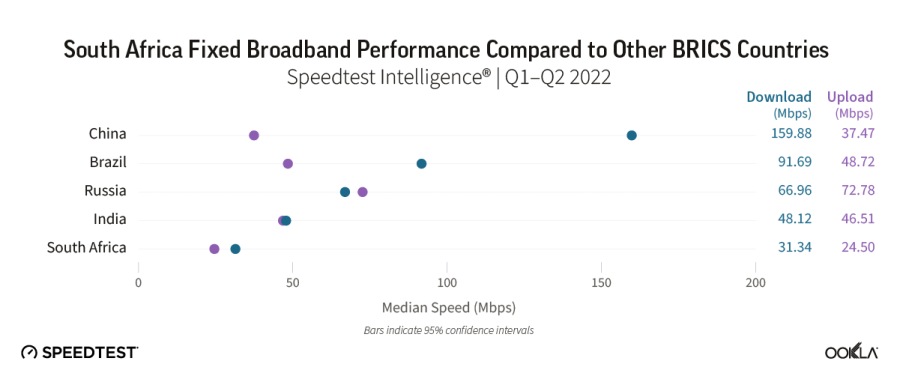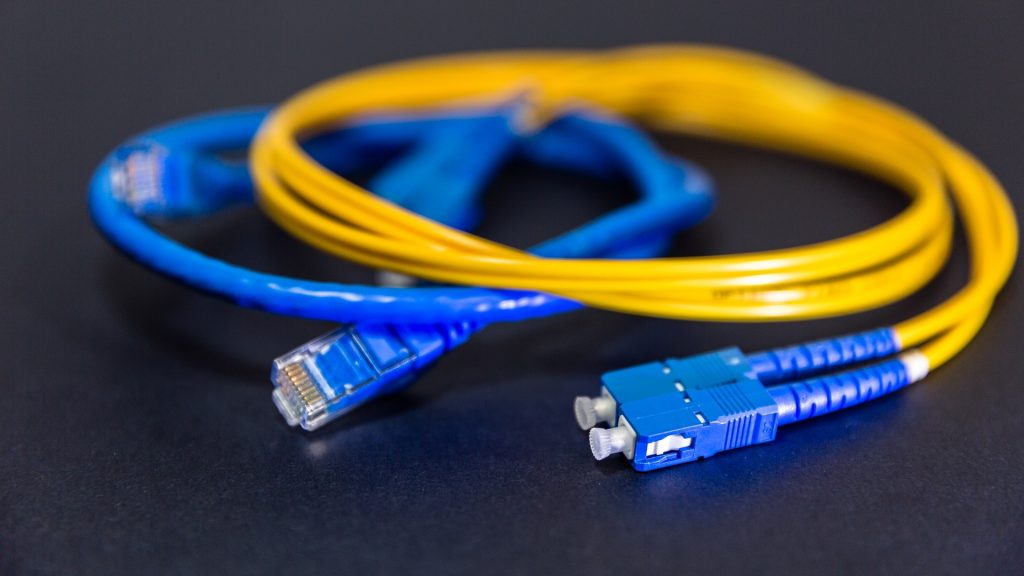The pandemic has been terrible, but it turns out that working from home helped bump up the median speeds of South Africa’s fixed-line broadband internet.
The bump is notable as it sees median speeds jumping from 15.11Mbps in the first half of 2020 to 31.34Mbps in the first half of this year. The reason for this increase in median speeds?
According to Ookla this is because of increased competition and growth in fibre to the home (FTTH) subscriptions.
“The increasing competition in South Africa gave birth to a very competitive and vibrant fiber wholesale market. In fact, South Africa is experiencing a fiber network operators (FNOs) boom, with over 30 FNOs deploying their own infrastructure and sharing it with other operators on an open-access basis,” writes Ookla.
These speeds place South Africa in 95th place in Ookla’s Speedtest Global Index and while the firm states we’ve come a long way, there is still a lot of work to do.
“There are 17.4 million households in South Africa, and if we translate the overall number of broadband subscriptions into household adoption, this equates to just 10 percent of South African households having fixed broadband in September 2021,” writes Ookla in its Speedtest Intelligence report.
“On one hand, this marks an improvement over 2020, when less than one-tenth (8.3 percent) of households had access to fixed internet at home, according to the General Household Survey. But on the other hand, there was — and is — a significant urban/rural divide. 14 percent of households in metropolitan areas had access to the Internet at home compared to only 0.8 percent of rural households according to the same survey,” it adds.
Comparing South Africa to other BRICS (Brazil, Russia, India, China and South Africa) nations, we are lagging behind.

We don’t want to discount the work that is being done as regards connectivity because we understand that laying out infrastructure is a time consuming and costly task.
However, the fact that Ookla points out that SA Connect is only now entering its second stage, nine years after the project was launched, should raise eyebrows.
Originally launched in 2013, SA Connect is government’s initiative to bring connectivity to all. The project aimed to bring internet access at 5Mbps to 90 percent of the population by 2020 and a 100Mbps connection to 50 percent of the population by the same year.
By 2030, government should have 100 percent of citizens, schools, health facilities and public sector facilities equipped with internet ranging from speeds of 10Mbps to 1Gbps, depending on the use case.
By January of this year, government had installed 10Mbps connections to 970 critical government facilities and that’s not even all of the facilities it wants to connect.
“The SA Connect project targets to achieve 80 percent broadband access in communities and government facilities over the next three years with a minimum speed capacity of 10Mbps per second and 100 Mbps for the high-demand facilities,” cabinet spokesperson, Phumla Williams said in January.
We bring all of this up because while doubling median speeds over three years is great, this isn’t thanks to government. A spectrum auction which was meant to have happened years ago, was only just wrapped up after many delays. SA Connect has had its finish line moved so often, we don’t know if we can even trust what government tells us about it anymore.
This is concerning because while fibre network operators are largely private sector entities, government involvement is key, something Ookla eludes to in its report.
“South Africa could also look to Chile for inspiration on how to improve its fixed broadband performance. Currently, Chile tops the ranking in terms of global fixed broadband performance, with a fixed median download speed of 213.73 Mbps. While it took time, Chile’s healthy fixed broadband performance is due to a mix of a supportive regulatory environment and robust market competition. According to Chilean regulator Subtel, 83 percent of fixed broadband connections comprise speeds of 100 Mbps thanks to a growing penetration of fiber to the home,” writes Ookla.
While Ookla points out that there is a need for more investment in broadband infrastructure, it also highlights that the underlying infrastructure of the country needs to be reliable. The firm is of course talking about loadshedding which is a constant plague on local businesses.
Hell, MTN had to lease generators from other businesses recently to keep its mobile infrastructure up during power cuts.
It’s great to see that South Africa’s internet is improving, but really, we should be seeing much more improvement from projects like SA Connect than we currently do.

